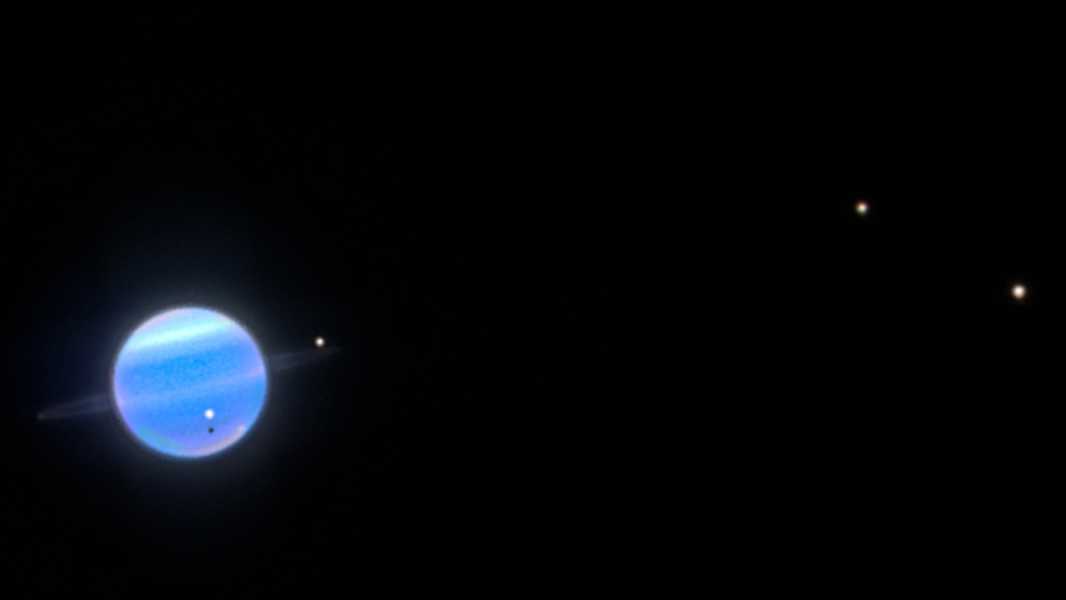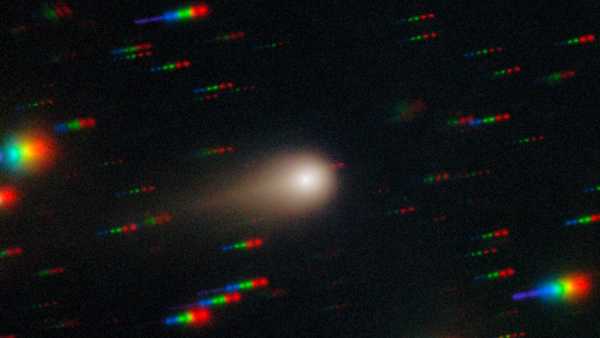
A new study has carefully analyzed Uranus's four largest moons to find out which side of these moons is brighter. (Image credit: Science: NASA, ESA, STScI, Christian Soto (STScI); Image processing: Joseph DePasquale (STScI))
Astronomers have discovered that the “dark sides” of Uranus's major moons are not located where originally thought, and in some cases, on completely opposite sides of the icy satellites than previously thought.
Uranus has 28 confirmed moons, including five major ones. The closest of these large satellites is Miranda, followed by Ariel, Umbriel, Titania, and Oberon — all named after characters in William Shakespeare's plays. These icy bodies, which range in width from 293 to 980 miles (472 to 1,578 kilometers), are all “tidally locked” by Uranus, meaning that the same half of the moon always faces the planet, much like Earth's moon.
Because of this tidal locking, the major moons have a “leading side,” the hemisphere that faces forward in their orbits, and a “trailing side,” which always faces backward in the moons’ wake. Scientists expected that the leading sides of each moon would appear brighter when analyzed in invisible bands of electromagnetic light, such as ultraviolet and infrared wavelengths. This is because electrons from the planet’s magnetic field, or magnetosphere, should be captured by the moon and naturally accumulate on their trailing sides, scattering the radiation and giving them a “dark” appearance, as seen on some other moons in the solar system.
You might be interested
- James Webb Telescope Captures Strange Changes on Jupiter's Icy Moon Europa
- James Webb Telescope Captures Auroras on Neptune for the First Time
- James Webb Telescope Finds 'Impossible' Auroras on Jupiter
However, in the new study, scientists used the Hubble Space Telescope's ultraviolet instruments to study the brightness of Ariel, Umbriel, Titania, and Oberon. Surprisingly, none of the leading sides of the moons were brighter than their corresponding back sides, and in Titania and Oberon, the back side was actually brighter than the leading side, completely disproving the current theory.
The team presented their findings on Tuesday (June 10) at the 246th meeting of the American Astronomical Society in Anchorage, Alaska. The results have not yet been published in a peer-reviewed journal.
Sourse: www.livescience.com





